Articles on British coins
This section lists articles on British coins. Articles on British tokens can be found here. You can submit an article by contacting us.

350 Years of the Royal Observatory Greenwich
The Royal Mint released several coins to commemorate the 350 years of the Royal Observatory Greenwich in partnership with the National Maritime Museum. The reverse design, by Henry Gray, depicts several scientific elements that have contributed to some of the historic discoveries made by the Royal Observatory.
By Coinsanduk | Thursday, August 21, 2025
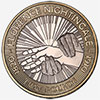
2 Pounds 2010 Florence Nightingale
During the Crimean War Nightingale astounded the world by taking a team of nurses to Constantinople to care for and comfort the ill and critically injured troops. She was relentless in harrying politicians for desperately needed supplies and through her ceaseless labour brought order and cleanliness to the Barrack Hospital at Scutari, becoming known as The Lady with the Lamp as she tended the wounded at night.
By Coinsanduk | Thursday, July 31, 2025

John Mills and the Dove of Peace
For the 80th anniversary of VE Day (Victory in Europe) on May 8, 1945, the Royal Mint released a new 50 Pence coin. The coin features a version of John Mills dove of peace. Mills first accepted design was the 50 Pence Normandy Landings on D-Day coin in 1994.
By Coinsanduk | Tuesday, May 13, 2025

2 Pounds 2011 Mary Rose
A detailed image of the legendary ship has been struck with detail into a limited edition 2011 £2 coin marking the 500th anniversary of the 1511 launch. The edge inscription reads: YOUR NOBLEST SHIPPE 1511, taken from a letter written by Sir Edward Howard, Lord Admiral onboard the Mary Rose, to the King, 22 March 1513.
By Coinsanduk | Tuesday, April 15, 2025

2 Pounds 2016 World War I and Army
In continuation of the five years program of commemoration, the Royal Mint produced a £2 coin with the team at creative agency Uniform to remember the camaraderie of those men and the unity and pride of the communities they volunteered to defend.
By Coinsanduk | Friday, April 4, 2025

2018-2019 British 10 Pence Coin Hunt A to Z
The Royal Mint’s A to Z 10 Pence coins hunt celebrated British subjects, from Great British landmarks such as Stonehenge, to a Double Decker Bus, the Quintessential A to Z saluted what it means to be British. The Royal Mint invited the population to collect them all. The reverse design for each year is the same for every letter. Mintage for the circulation coins is 220,000 each, in 2018, 84,000 each except for the letters R (64,000), W (63,000), Y (63,000) and Z (63,000)
By Coinsanduk | Friday, March 14, 2025

Golden Jubilee 2002 £5 Coin
The Royal Mint released in 2002 a new £5 Jubilee crown, commemorating the Golden Jubilee of Her Majesty the Queen. The obverse of the coin features an elegant equestrian portrait of the Queen, in keeping with the design of crowns struck previously to celebrate the Queen's Coronation in 1953 and her Silver Jubilee in 1977. The accompanying inscription, Amor Populi Praesidium Reg, conveys the happy notion that the love of the people is the Queen's protection.
By Coinsanduk | Wednesday, March 5, 2025

100th Anniversary of the First World War and Outbreak
The year 2014 marked the centenary of the outbreak of the First World War. In 1914, Lord Kitchener was appointed to mastermind a recruitment campaign that would go on to create one of the largest volunteer armies ever known in Britain. It was commemorated by the Royal Mint with the first coin of a five-year series.
By Coinsanduk | Thursday, February 13, 2025

2001 Victoria £5 Coin to Celebrates the Image of an Era
When Queen Victoria died in 1901, more than 2,000 million United Kingdom coins had been produced by the Royal Mint bearing her portrait. For most of Queen Victoria's subjects, the depiction of their Queen on coins was one of the few ways in which they would have known what she looked like. And during her 64-year reign, the changing portraits on the coinage reflected the Queen as she moved from a young woman, to a mother of nine and a widow in mourning.
By Coinsanduk | Saturday, February 1, 2025

Nations of the Crown £1 2016 to 2022
The £1 coins started rolling off the production line at a rate of over 4000 a minute in 2016. The new 12-sided coin resembles the old threepenny bit. The new £1 coin was announced by the Chancellor at Budget 2014, and the design of the new coin was announced at Budget 2015.
By Coinsanduk | Saturday, January 18, 2025

The Royal Shield of Arms - 2008 to 2024 Coins Designs
The coinage of the United Kingdom changed drastically in 2008. Familiar designs that have served for almost 40 years were replaced by a new set of designs, contemporary in treatment and in the traditions of the coinage. The series that has been chosen draws inspiration from the very fabric of British history. The Royal Mint revealed the new designs saying that the coins focus on details of the shield of the Royal arms and when placed together they reveal the complete shield.
By Coinsanduk | Tuesday, December 24, 2024

Commonwealth Games - 2 Pounds 2002
To celebrate the XVII Commonwealth Games which was hosted by the City of Manchester, the Royal Mint launched official Commonwealth Games £2 coin in 2002. The reverse of the coin has been designed to represent celebration, victory and sportsmanship. It shows a moving figure holding a banner in the air, the top of which is divided into lines symbolising the lanes of a running track or those of a swimming pool.
By Coinsanduk | Sunday, December 15, 2024

Rarest 50 Pence in circulation according the to Royal Mint
The list of rarest 50 pence in circulation by the Royal Mint was just updated, with the addition of the 50 Pence 2023 Atlantic Salmon design. The original list was first published early in 2023. Displaying the traditional image of Britannia that represents the spirit of our nation, the 50p coin was introduced in 1969 as part of the new decimal coinage.
By Coinsanduk | Wednesday, October 9, 2024

2 Pounds 2003 - DNA Double Helix
The Royal Mint is launched in 2003 a new £2 coin, to celebrate the fiftieth anniversary of the discovery of the Double Helix structure of DNA by Francis Crick and James Watson.
By Coinsanduk | Friday, October 4, 2024

2 Pounds 2001 - Marconi and the first transatlantic wireless transmission
A legal tender £2 coin, with a special reverse design, to commemorate the 100th anniversary of the first transatlantic wireless transmission, was introduced into general circulation, beginning October 15, 2001.
By Coinsanduk | Thursday, September 26, 2024

50 Pence 2003 - Suffragettes
On March 6, 2003, the Minister for Women, The Rt. Hon. Patricia Hewitt MP, officially launched a 50 pence coin produced commemorating the 100th anniversary of the formation of the Women's Social and Political Union (WSPU).
By Coinsanduk | Wednesday, September 18, 2024

1714 Prince Elector Guinea
The Electress's son, George, Elector of Hanover, succeeded pursuant to the Act of Settlement 1701. King George I of England was also Prince Elector of the Holy Roman Empire, a man of immense power and wealth. The king's many titles appear in abbreviated Latin form on the 1714 guinea, occupying both sides.
By Coinsanduk | Wednesday, September 4, 2024

2024 Coins Designs - Charles III
On October 12, 2023, the Royal Mint unveiled the eight coin designs that appear on official UK coins. The new designs are inspired by flora and fauna found across Britain and reflect King Charles III's passion for conservation and the natural world.
By Coinsanduk | Tuesday, August 27, 2024

United Kingdom Trade Dollars
Minted from 1895 for Hong Kong and the Straits Settlements, the British trade dollar was designed by George William De Saulles and features a dramatic standing Britannia, helmet-wearing, holding a trident and with the British shield with a merchant ship in the background.
By Coinsanduk | Wednesday, July 31, 2024

The Gun Money of James II
The title means exactly what it says! These coins were struck in Ireland and used to pay the common soldiers of James II's army, who were helping him to regain the English throne from William and Mary. Most historians believe that the foreign officers - mostly French, Spanish and Portuguese - refused to be paid in anything other than gold or silver.
By Stanley Draper | Thursday, June 13, 2024

The Three Graces 1817 Silver Pattern
Produced in 1817, this pattern crown is depicting England, Ireland, and Scotland anthropomorphized as the Three Graces of Greek mythology wrapped in a circular embrace, the three Goddesses together represent the United Kingdom.
By Coinsanduk | Sunday, June 2, 2024
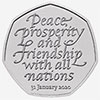
50 Pence 2020 - Withdrawal from the European Union (Brexit Coin)
The Brexit 2020 50 Pence coin features an inscription which reads Peace, prosperity and friendship with all nations on the reverse. Unveiled by Chancellor Sajid Javid, it commemorates the United Kingdom's withdrawal from the European Union.
By Coinsanduk | Wednesday, April 17, 2024

British Monarchs - 1751 to 1952
Small history of British monarchs: George III, George IV, William IV, Victoria, Edward VII, George V, Edward VIII, George VI and Elizabeth II.
By Coinsanduk | Wednesday, April 3, 2024

SSC British Coinage of 1723 - South Sea Company
Letters SSC can be found on a small quantity of 18th British silver coins in the reverse quarters of the cruciform shields. It is a provenance mark, only added to pieces in 1723, and it refers to the South Sea Company.
By Coinsanduk | Thursday, March 21, 2024
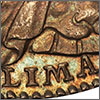
Lima British Early Milled Coins
The coins provenance marked LIMA are all made with precious metals from treasure captured from Spanish ships off the coast of the Peruvian city of Lima by the English Privateers John Morecock and James Talbot, Captains of the Prince Frederick and the Duke in 1745.
By Coinsanduk | Thursday, February 15, 2024
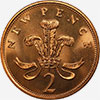
2 Pence 1983 - Mule - New Pence
All 2 pence coins struck between 1971 and 1981 included the words New Pence as part of their reverse. In 1982 and in subsequent years, the words New Pence were replaced with the words Two Pence. However, in 1983, a small number of 2 pence coins were mistakenly struck with the wording New Pence on the reverse and were included in special sets intended for collectors.
By Coinsanduk | Tuesday, February 6, 2024
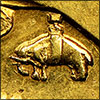
Elephant and Castle on British Coins - The Royal African Company
The Elephant and Castle symbol comes from the emblem of the Royal African Company in Africa. It was founded, as The Company of Royal Adventurers Trading to Africa after Charles II ascended to the throne in 1660.
By Coinsanduk | Wednesday, January 24, 2024
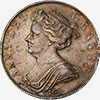
Battle of Vigo - 1702-1703 Anne British Coins
Coins struck from the treasures found after the battle bore the word VIGO below Anne's bust and are rare and valuable. It was mostly use as a tool of propaganda and was included in a campaign to add reputation to the Queen. Denominations with VIGO under the bust include: Half Guineas, Guineas, Two Guineas, Five Guineas, Crowns, Halfcrowns, Shillings and Sixpences. Silver VIGO coinage is not rare but is sought-after.
By Coinsanduk | Saturday, January 13, 2024
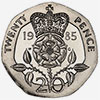
Designs on British coins from 1971 to 2008
Before decimalisation, a pound equalled 20 shillings and each shilling was worth 12 pence. Working with a base unit of 12 made calculations quite difficult. Decimalisation began on February 15, 1971 (decimal day). At the time, most countries around the world had decimal-based currencies. Since, the pound has been divided into 100 (new) pence. For the new denominations, the Royal Mint also commissions the coins' designs.
By thecanadiannumismatist | Monday, January 8, 2024
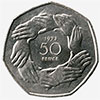
50 pence 1973 - European Economic Community
A one-year design was produced in 1973 for the 50 pence coins. It was issued to commemorate Britain's entry into the European Economic Community (EEC).
By Coinsanduk | Friday, January 5, 2024
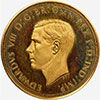
Edward VIII 13-coin proof sets
On March 25, 2021 a 5 pounds pattern 1937 featuring Edward VIII sold for £1,900,000 after 42 bids at Heritage Auctions. This coin is certified PR-67 Ultra Cameo by NGC. According to Joseph Giordano, in his Portraits of a Prince, recorded approximately 6 sets known to him in 2009, most of which have been broken-up since their initial issuance.
By Coinsanduk | Thursday, May 13, 2021

Una and the Lion - Most beautiful coins ever produced
One of the rarest coins in Great Britain, and a coin much sought after by collectors, is the Una and the Lion five pounds. This was a gold coin from the reign of Queen Victoria that depicted the young queen symbolically leading the British Lion.
By Coinsanduk | Thursday, February 18, 2021
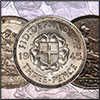
Rarest and most valuable pre-decimal British circulating coins
Gold coins, proofs and patterns were intentionally excluded from this list since they will have their own lists. Here's are the most rare and valuable pre-decimal (1816 to 1967) British circulating coins sorted by denomination and date.
By Coinsanduk | Saturday, December 5, 2020
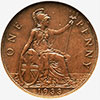
Penny 1933 - Most sought-after bronze coin for several decades
This is the most famous penny of the last 150 years and was one of the most sought-after bronze coin in the world for several decades. Because most of the 1932 pennies were still not released into circulation, the 1933 penny was not produced in large quantities. Less than 15 are known to exist, including the one that was stolen and disappeared in August, 1970.
By Coinsanduk | Tuesday, November 17, 2020
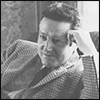
Grading British Coins
Used by most major third party grading companies, the Sheldon scale is a numerical grading system (1 to 70) instead of a adjectival grading system, like it is sometimes used for nonencapsulated and certified coins, to qualify the quality of a coin. It was first presented in 1949 as a way to grade United States cents, but it was only chose by the American Numismatic Association in the 1970s for all US coins.
By Coinsanduk | Tuesday, October 20, 2020

Old Denominations - Tudor Sovereign
For the sake of clarity, issues of the Tudor sovereign can be usefully divided into three groups: sovereigns struck in fine (995) gold; sovereign issues of the Great Debasement; and sovereigns struck in crown (916) gold after the Debasement.
By RMM | Thursday, October 15, 2020
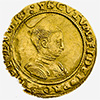
Old Denominations - Tudor Half-Sovereign
Timeline of the Tudor Sovereign including specifications and issues during the Great Debasement and post-Debasement (1544 to 1604).
By RMM | Friday, October 2, 2020
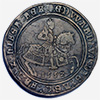
Old Denominations - British Coins
The coins that have made up the British currency have had many different names. From angels and nobles to tanners and bobs, there have been affectionate nicknames and functional descriptions. Revisit the fractional farthings, farthing, halfpenny, penny, threepence, sixpence, shilling, florin, half-crown and crown.
By RMM | Friday, September 25, 2020
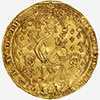
Edward III 1343 Florin - One of the most expensive coin in the world
Listed in most top 10 most expensive coins in the world, only 3 examples of this medieval England gold coin exist. Also called Double Leopard, 2 of them are owned by the British Museum in London and both of them were found together by schoolchildren on the River Tyne in 1857.
By Coinsanduk | Tuesday, June 9, 2020
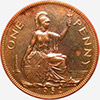
The unique 1952 Proof Penny
The only kown 1952 british penny, submitted by Sovereign Rarities, a London-based coin dealer, was certified recently by NGC. This unique coin was graded Proof-64 Red and Brown. In 2016, Spink estimated the value of this coin at £75,000.
By Coinsanduk | Monday, April 20, 2020
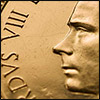
Edward VIII Sovereign - The 1 Million Pounds Gold Coin
This gold (22-carat) £1,000,000 coin was created as part of a trial set following Edward VIII's ascension to the throne in January 1936, but was never released to the public after he gave up the throne. First British coin in history to sell for that price, this Edward VIII Sovereign example was described by the Royal Mint, which oversaw the transaction, as one of the most coveted in the world.
By Coinsanduk | Sunday, March 15, 2020
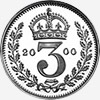
Maundy money
The Royal Maundy is an ancient ceremony which has its origin in the commandment Christ gave after washing the feet of his disciples on the day before Good Friday. The commandment, or mandatum, that ye love one another (John XIII 34) is still recalled regularly by Christian churches throughout the world and the ceremony of washing the feet of the poor which was accompanied by gifts of food and clothing, can be traced back to the fourth century.
By The Royal Mint | Wednesday, February 22, 2012
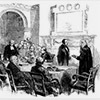
Trial of the Pyx History
The name Pyx refers to the chests in which the coins are transported, and derives from the Pyx chamber in Westminster Abbey where historically the chests were kept. Little has changed in the procedure since the reign of Henry III; throughout the year, coins are randomly selected from every batch of each denomination struck, sealed in bags containing 50 coins each, and locked away in the Pyx boxes for testing at the Trial.
By The Royal Mint | Wednesday, February 22, 2012
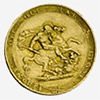
The History of the Gold Sovereign
The name Pyx refers to the chests in which the coins are transported, and derives from the Pyx chamber in Westminster Abbey where historically the chests were kept. Little has changed in the procedure since the reign of Henry III; throughout the year, coins are randomly selected from every batch of each denomination struck, sealed in bags containing 50 coins each, and locked away in the Pyx boxes for testing at the Trial.
By The Royal Mint | Wednesday, February 15, 2012
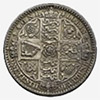
The Story of Decimal Coinage
For those of us under the age of 50, it is hard to imagine accounting in pounds, shillings and pence, a system whereby 12 pennies made a shilling and 20 shillings a pound. But that was the complex arithmetic our grandparents wrestled with and, moreover, was a system which they were reluctant to see disappear.
By The Royal Mint | Wednesday, February 15, 2012
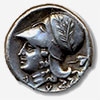
Britannia - The Spirit of a Nation
When the Romans subdued these shores, they named the territory Britannia, personifying the province in the form of a female warrior. Conceived as a symbol of strength, this inspiring figure helped establish political unity. And for 2,000 years she's been a reassuring presence through times of upheaval and change. Dynasties fall but Britannia endures, underpinning our national identity.
By The Royal Mint | Wednesday, February 15, 2012

The Anglo-Irish Coinage of Elizabeth I
The Anglo-Irish coins of the first Queen Elizabeth are not a pretty sight. Probably because of this, their study has been neglected over the years. Indeed, it is tempting to dismiss them as divisible into three distinct coinages and leave it at that - but I cannot let the reader off that lightly!
By Christopher Comber | Thursday, September 22, 2011

History of the Florin
In 1344, during the reign of England's King Edward III, an impressive gold coinage comprising the Florin or Double Leopard, valued at six shillings, and its half and quarter, the Leopard and Helm respectively, were introduced. The design of the Florin was based on the contemporary gold issues of France's Philip de Valois.
By AG | Tuesday, January 5, 2010
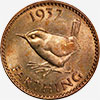
Farthing History
Little is known of the medieval silver farthing, for few remain. As the smallest denomination, it was rarely hoarded — in fact silver farthings have never been found in large hoards — and since it contained a quarter-penny's worth of silver it was also extremely small, therefore easily lost. Besides, farthings were not produced in anything like the quantities of the penny and halfpenny because, although they were useful to ordinary people, they were not so much used by the wealthy and powerful; and because, for the moneyers, they yielded the least profit of any denomination.
By AG | Tuesday, December 22, 2009
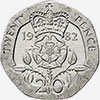
British coins decimalisation
The need for a decimal currency system had been discussed in Parliament in the early nineteenth century and as far back as 1849 a florin was introduced - inscribed one tenth of a pound with the intention that it should be the first step towards the adoption of a decimal system.
By The Royal Mint | Friday, August 1, 2008
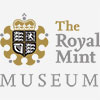
Origins of the Royal Mint Museum
The Royal Mint Museum was established in 1816 by the Master of the Mint William Wellesley Pole. In a memorandum of 12 February 1816 he wrote that he had observed with pain that not only was there no Collection of British Coins in His Majesty's Mint, but there is not a single Proof Coin or a single serviceable Matrix or Puncheon preserved in the Office.
By The Royal Mint | Friday, August 1, 2008
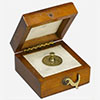
Weights and balances
Coins have to be produced accurately today as a defence against counterfeiting and so that they can efficiently operate vending machines. When the British coinage was made of gold and silver and the face value of the coins was related to the actual amount of gold or silver they contained, making coins accurately was just as much of a concern.
By The Royal Mint | Friday, August 1, 2008

Sir Isaac Newton, Warden of the Mint
Isaac Newton was appointed to a position in the Mint in the spring of 1696 on the recommendation of the Chancellor of the Exchequer Charles Montague. At first sight this may seem a somewhat curious, even backward, step for a man in his early fifties whose life had been spent in the academic surroundings of Trinity College, Cambridge.
By The Royal Mint | Friday, August 1, 2008
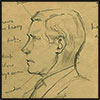
Sketch of Edward VIII by Humphrey Paget
When, early in 1936, a new portrait of Edward VIII was required for coins and official medals, Robert Johnson, the then Deputy Master of the Mint, helpfully arranged a sitting with the King at Buckingham Palace for two artists. Humphrey Paget was one, the letter of invitation from Johnson suggesting that he wore a black tie and any other raiment, coloured or otherwise.
By The Royal Mint | Tuesday, July 22, 2008
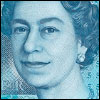
Names Suggested by the Public for use on Bank of England Banknotes
The list comprises names of individuals suggested by members of the public for use on Bank of England banknotes. The Bank reserves the right not to include suggested names, entirely at its discretion. In particular, it would not include fictional names, names which are not reasonably well known, and names which the Bank considers might cause public offence. Inclusion on the list does not imply any endorsement by the Bank.
By Bank of England | Tuesday, December 18, 2007
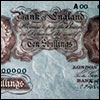
A brief history of banknotes
The first recorded use of paper money was in the 7th century in China. However, the practice did not become widespread in Europe for nearly a thousand years. In the 16th century the goldsmith-bankers began to accept deposits, make loans and transfer funds. They also gave receipts for cash, that is to say gold coins, deposited with them. These receipts, known as running cash notes, were made out in the name of the depositor and promised to pay him on demand.
By Bank of England | Tuesday, November 6, 2007
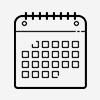
Global date cross reference chart
Most countries in the world live according to the Gregorian calendar introduced by Pope Gregory XIII in 1582 in most Catholic countries in place of the Julian calendar. The difference between these 2 calendars today is 13 days, and it increases by 3 days every 400 years. But Many more calendars exist today...
By Acadia Coins | Saturday, May 3, 2003
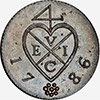
British East India Co. a power unto itself
You've probably heard about the Boston Tea Party, the Opium Wars with China and Napoleon's exile to the remote island of St. Helena. But did you know that ll these major world events, and many more, occurred because of the East India Company? It all started Dec. 31, 1600.
By George Manz | Monday, July 1, 2002
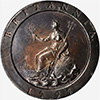
Britain's Cartwheel Coinage of 1797
You've probably heard these words and names before: Cartwheel, Soho, Matthew Boulton, and James Watt. But did you know how instrumental they were in accelerating the Industrial Revolution? Like the strands of a rope, the history of Britain's 1797 Cartwheel coinage is intertwined with the Industrial Revolution.
By George Manz | Saturday, September 1, 2001
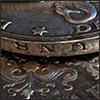
Coins Inscriptions
This alphabetical listing is confined to inscriptions, mainly in the form of mottoes or of a commemorative nature. Names of rulers are, for the most part, excluded. Where the inscription is in a language other than English a translation is given, followed by the name of the issuing country or authority.
By Royal Mint | Tuesday, July 3, 2001

The East India Company outside India
The East India Company (E.I.C.) was granted its Charter in 1600 and sent out its first expedition in 1601. It carried trade goods and coined silver, some of which may have been the trade coins now better known as Portcullis money, struck in 1600. The 8, 4, 2 and 1 reales were struck without a portrait, which was said to ensure their acceptance in Muslim states (human representation is not acceptable in Islam). However, this was not repeated since the pieces failed to replace the well established Spanish dollars.
By John Roberts-Lewis | Thursday, September 9, 1999

The Gonzagas
The Gonzagas came from Mantua, a city with a population of about 100,000 souls in an area of 20,000 hectares. It was part of the Holy Roman Empire. In the 13th century the Bonacolsi family had become the hereditary Capitane del Popolo, although they were nominally democratically elected. Their power was increased by the simple expedient of exiling recalcitrant aristocrats and was such that they gained the title of Imperial Vicar of Mantua from the Emperor Henry VII.
By Coinsanduk | Thursday, June 10, 1999

Medals as gifts in ancient Rome
Roman medals or, as they are usually called, Roman medallions, are not an easy class to define. We can start by saying that they were not. They were not awards for bravery; soldiers in the Roman army were rewarded with decorative discs (phalerae) which could be fixed to their uniform. Nor, indeed, were Roman medals in the modern sense – they were not privately produced metal objects intended to be sold as souvenirs of events like royal coronations or great exhibitions.
By Coinsanduk | Wednesday, February 4, 1998

Genuine forgeries
Forgery is a spurious thing, not genuine, not being what it pretends to be, and not coming from the pretended source. One of the classic tales in numismatics is how a former Director of the British Museum, Sir George Hill, saw an attractive Greek lady and his eyes were riveted on a splendid large Athenian decadrachm of the finest style of the mid-fifth century BC which she was wearing set in a piece of jewellery. Appropriate negotiations in 1920 secured it for the British Museum but, sadly, the piece subsequently turned out to be an imitation by the notorious Athenian forger Constantine Christodoulos.
By Thomas Curtis | Tuesday, January 6, 1998

The British Impact on Native Indian Coinages
It was the Portuguese who first issued coins in India during the reign of D. Joao III (1521-57). These bore a coat of arms, St Thomas, armillary sphere and cross, etc. The first British settlement in India was at Surat in 1612. A factory had been opened at Masulipatam in 1611 and the first factories in Bengal were opened in 1633.
By Stan Goron | Tuesday, October 8, 1996



